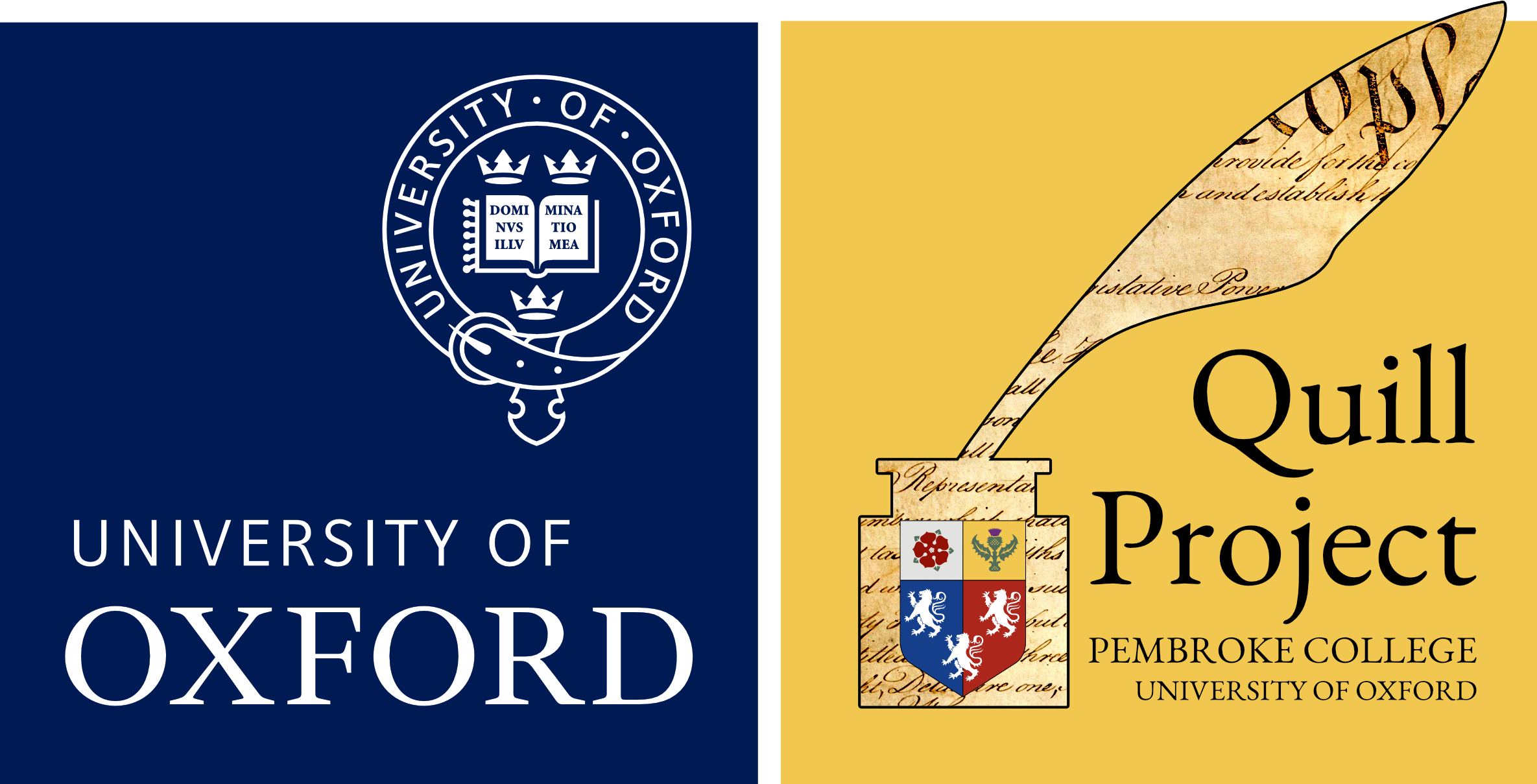About Quill
The Quill approach
Detail from the Quill platform
Rather than focusing on the final texts of constitutions and other legal documents, the Quill Project focuses on the process of negotiation, as it can be reconstructed from the typical records of formal processes of negotiation, that will include (at minimum) a journal of proposals made and decisions taken.
Modelling the work of such a process of negotiation involves detailed work to understand the surviving manuscripts, and often a considerable amount of archival work. The research methodology of the project, therefore, combines both traditional historical work and computer science methodologies.
Collation of records
The Quill platform promotes understanding by bringing together the records of the negotiation process and offering a range of tools which allow users to explore the context in which the original debates took place. A unique benefit of Quill is its ability to integrate both formal and informal records and to use information from multiple sources to reconstruct debates and discussions. The model of the 1787 Constitution, for example, is built from hundreds of pages of text, drawn from 49 different original sources.
Where digital content already exists, the platform does not attempt to replicate the work of libraries and online archives. Rather, through partnership with these institutions, we provide users with curated collections of links, while adding value through the creation of tools to exploit this material through a sophisticated reconstruction of context, higher level analysis, a system for attaching commentaries and annotations, and the development of educational resources. However, in the case of our Utah State Constitution material, student researchers had to begin by collating archival materials in the state archives.
Modelling process
After establishing the necessary records are available, the Quill Project uses bespoke software to model the formal process of negotiation, capturing from the official journals and other documents the structure of debate. Once this model is in place, it serves as a spine around which supplementary information (for example, events and information that are not part of the formal negotiation) can be presented.
Capturing context
One of our primary objectives has been to enhance understanding of the context within which particular decisions were taken. The Quill platform achieves this by storing a representation of the sequence of events within a negotiation (the linear timeline of each committee) in such a way that the agreed state of documents and related information can be calculated and presented to users for any selected moment during the negotiations.
Generating insight
The visual representations which Quill provides elucidate the process and outcomes of a negotiation, facilitating both research and education. Our models offer clarity and save time for researchers. They have generated surprising insights into, for example, the differences between the federal and state constitutions. The ability to attach bespoke commentary to particular moments in time makes Quill a useful tool for educators. Nicholas Cole has received Knowledge Exchange funding to explore the educational potential of the platform further.

